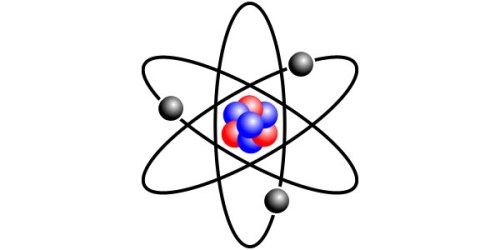

Atom picture software#
The information in the caption needs to be included elsewhere, either in the image description or as braille labels on the object.ĬAD or CAM software is needed to create 3D files and a 3D printer must be available to the user in order to print a 3D object once the file has been created. Educators are free to use these materials with the proper acknowledgement of source. Browse 32,000 atoms stock photos and images available, or search for molecule or abstraction of an atom to find more great stock photos and pictures.


This is an example of an image in which the labels beneath the two parts of the drawing may be embedded in the image, in which case they will not be readable as live text by the user's assistive technology. A remarkable photo of a single atom trapped by electric fields has just been awarded the top prize in a well-known science photography competition. Examples of image descriptions and tactile graphics appear elsewhere in this sample book this example presents a 3D model of the image. Students can model elements, ions, and isotopes by placing magnetic red (protons). The choice of modality varies depending on factors such as the information to be conveyed, grade level, student knowledge and experience, and the image itself. Build model atoms large enough for every student in the class to see. "A back-of-the-envelope calculation showed the numbers to be on my side, and when I set off to the lab with camera and tripods one quiet Sunday afternoon, I was rewarded with this particular picture of a small, pale blue dot.This image can be made accessible with an image description, by creating a tactile graphic, or by printing a 3D object of the image. Seeing inside the tiniest bits of matter is a. See the Abbe diffraction limit for further detailes. Scientists have captured the first ever photo of an electron’s whizzing orbit within a hydrogen atom, thanks to a unique new microscopy technique. He titled his picture Single Atom in an Ion Trap. The image, came first in the Equipment & Facilities category, as well as winning overall against many other stunning pictures, featuring research in action, in the EPSRCs competition – now in its fifth year.ĭavid Nadlinger explained how the photograph came about: “The idea of being able to see a single atom with the naked eye had struck me as a wonderfully direct and visceral bridge between the miniscule quantum world and our macroscopic reality," he said. But none of those listed methods would result in a real photograph of an atom - which isnt possible. This captivating photo of an atom was captured by a David Nadlinger, a quantum physicist and PhD candidate at the University of Oxford. They can serve as extremely accurate clocks and sensors or, as explored by the UK Networked Quantum Information Technologies Hub, as building blocks for future quantum computers, which could tackle problems that stymie even today’s largest supercomputers. Laser-cooled atomic ions provide a pristine platform for exploring and harnessing the unique properties of quantum physics. SuperSTEM microscopes allows researchers to see each and every single one of those atoms and detect, as in this image, when a single Si atom is introduced. The winning picture was taken through a window of the ultra-high vacuum chamber that houses the ion trap. The RadTown Radioactive Atom activities are designed to help students identify the structure of an atom and describe the. When illuminated by a laser of the right blue-violet colour the atom absorbs and re-emits light particles sufficiently quickly for an ordinary camera to capture it in a long exposure photograph. The distance between the small needle tips is about two millimetres. In the planetary model, a nitrogen atom has a central nucleus, composed of seven protons and seven neutrons, surrounded by seven electrons. ‘Single Atom in an Ion Trap’, by David Nadlinger, from the University of Oxford, shows the atom held by the fields emanating from the metal electrodes surrounding it. An image of a single positively-charged strontium atom, held near motionless by electric fields, has won the overall prize in a national science photography competition, organised by the Engineering and Physical Sciences Research Council (EPSRC). See the Highest-Resolution Atomic Image Ever Captured Scientists achieved a record level of visual detail with an imaging technique that could help develop future electronics and better batteries.


 0 kommentar(er)
0 kommentar(er)
